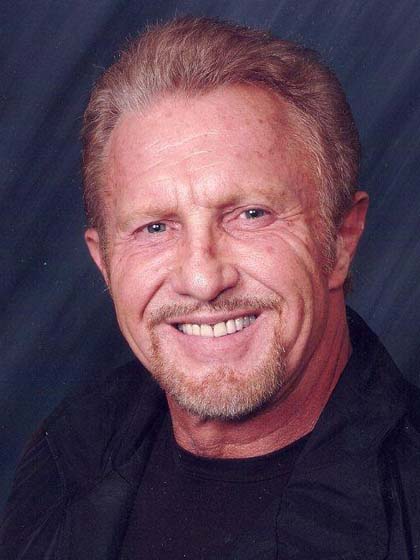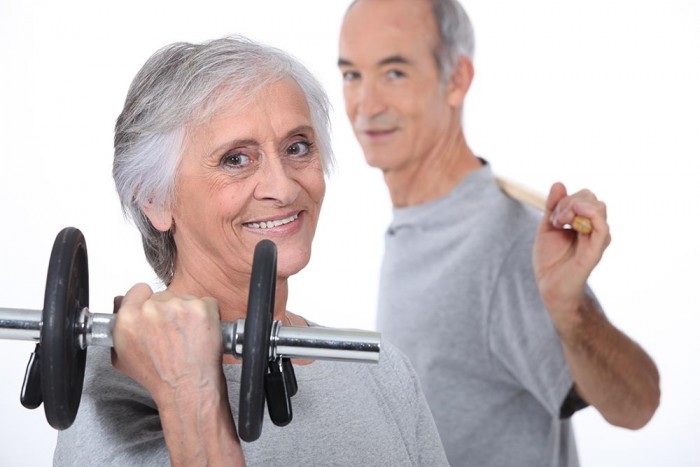
Strength Training and Aging
Joel Peterson – Level 5 Personal Trainer Apple Athletic Club
Aging is an “in your face” ongoing occurrence happening second to second. You can’t stop it but you can slow it down, sometimes to a crawl. You can also speed it up by living an unhealthy lifestyle of poor food choices, smoking, drinking, drugs and a sedentary day to day life. Or if you want to slow it down, you can take certain actions that will help you age at a “healthy” rate. Exercise is a critical part of a healthy lifestyle, and it can be a part of your life no matter what your age. In fact, staying active becomes increasingly important as you get older, both for your physical and mental health. Even frail seniors of advanced age can improve strength, agility, and even cognitive ability with exercise.
As you age, your existing bone is absorbed by your body while new bone is created to replace it. In the case of osteoporosis, the formation of new bone falls behind the rate of bone absorption, leading to weakened, thinner and more brittle bones. Want strong bones? Weight bearing exercise is the ticket.
Two years ago, at age 67 I had a total knee replacement due to an old injury. The surgeon told me they were amazed by my bone strength and density. He said I had some of the hardest bone he has ever seen. (He told my wife they nearly broke the saw trying to get through it!) I’m not a spring chicken. I was sixty seven years old. I also practice progressive strength training which has given me these great results. Interestingly enough, strength training also has brain-boosting side effects, which can help you avoid age-related dementia.

HOW DO YOU RATE ON THE FOLLOWING?
According to recent statistics from the Centers for Disease Control and Prevention (CDC) the majority—79 percent—of American adults aged 18 and over are not meeting federal recommendations for physical activity for either aerobic or muscle-strengthening exercise. Federal recommendations include getting:
- At least 2½ hours a week of moderate-intensity aerobic activity or one hour and 15 minutes a week of vigorous-intensity aerobic activity
- Muscle-strengthening activities that involve all major muscle groups, twice or more per week
An annual CDC phone survey of adults, 52 percent said they meet the aerobic activity guideline, and only 29 percent reported meeting the muscle-strengthening activity recommendation.
Progressive Resistance Training is Particularly Beneficial for Aging Adults
“Progressive resistance” is when you build up strength in your muscles by gradually increasing the amount of weight you use. You can use either gym equipment or free weights. The former may be safer if you’re a novice, as free weights will require better form and control. Make sure you have the proper form performing the exercises, to avoid injury. And take it slow and steady.
While resistance training will improve muscle and bone strength, which can help prevent falls and fractures, mounting research also shows that strength training can have a profoundly beneficial impact on your brain as well. In one study, seniors doing progressive resistance training twice a week for one year experienced a marked improvement in their cognitive ability, scoring up to 13% higher in tests relating to decision making.
Strength training increases your body’s production of growth factors, which are responsible for cellular growth, proliferation, and differentiation. Some of these growth factors also promote the growth, differentiation, and survival of neurons, which helps explain why working your muscles also benefits your brain.
High Intensity Training as an Anti-Aging Tool
Once you hit the age of 30, you enter what’s called “somatopause,” at which point your levels of HGH (human growth hormone) begin to drop off quite dramatically. This decline of HGH is part of what drives your aging process, so maintaining your HGH levels gets increasingly important with age.
Exercise boosts your body’s natural production of human growth hormone (HGH), which will help address the muscle loss and atrophy that typically occurs with aging.
Rounding Out Your Exercise Program
To truly optimize your health, it’s wise to incorporate a wide variety of exercises. Each form of exercise has its range of benefits. Also, without variety, your body will tend to adapt and the benefits will begin to plateau. As a general rule, as soon as an exercise becomes easy to complete, you need to increase the intensity and/or try another exercise to keep challenging your body.
When I’m asked by potential clients “am I too old to exercise”, I reply “you are too old not to”.
Following the advice in this article can go a long way toward maintaining healthy bones and muscle mass as you age. Granted, the earlier you start, the better, but remember, you are never too old to start exercising. Research shows that, no matter your age, you stand to gain significant improvements in strength, range of motion, balance, bone density and mental clarity through exercise.
I have set out in previous articles on Dr. Ward’s site many good strength training movements that will work the entire body. Please go back and review. Articles such as “Resistance Training” and “High Intensity Training” and “Exercises for Work and Home” will help you round out an effective program.
